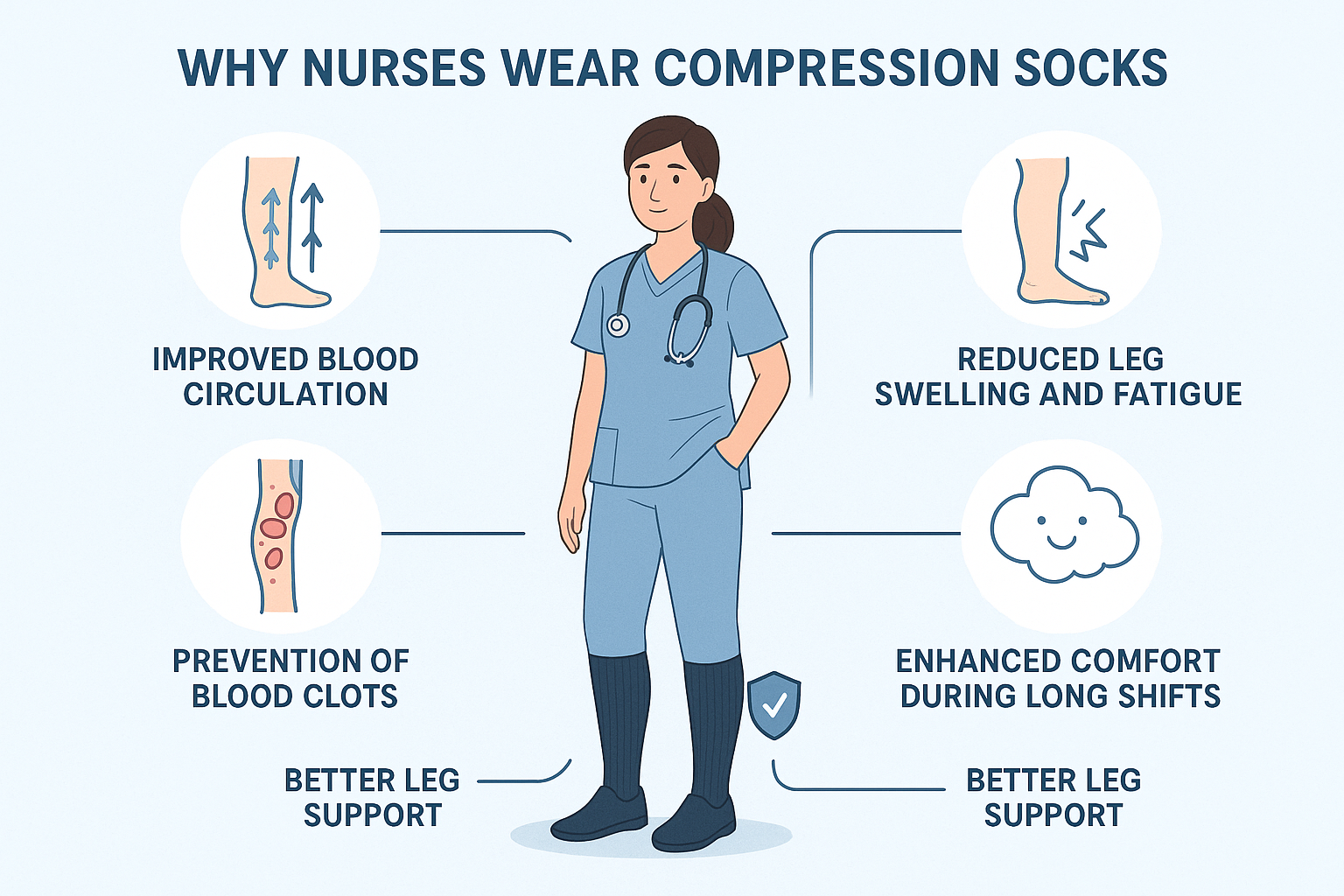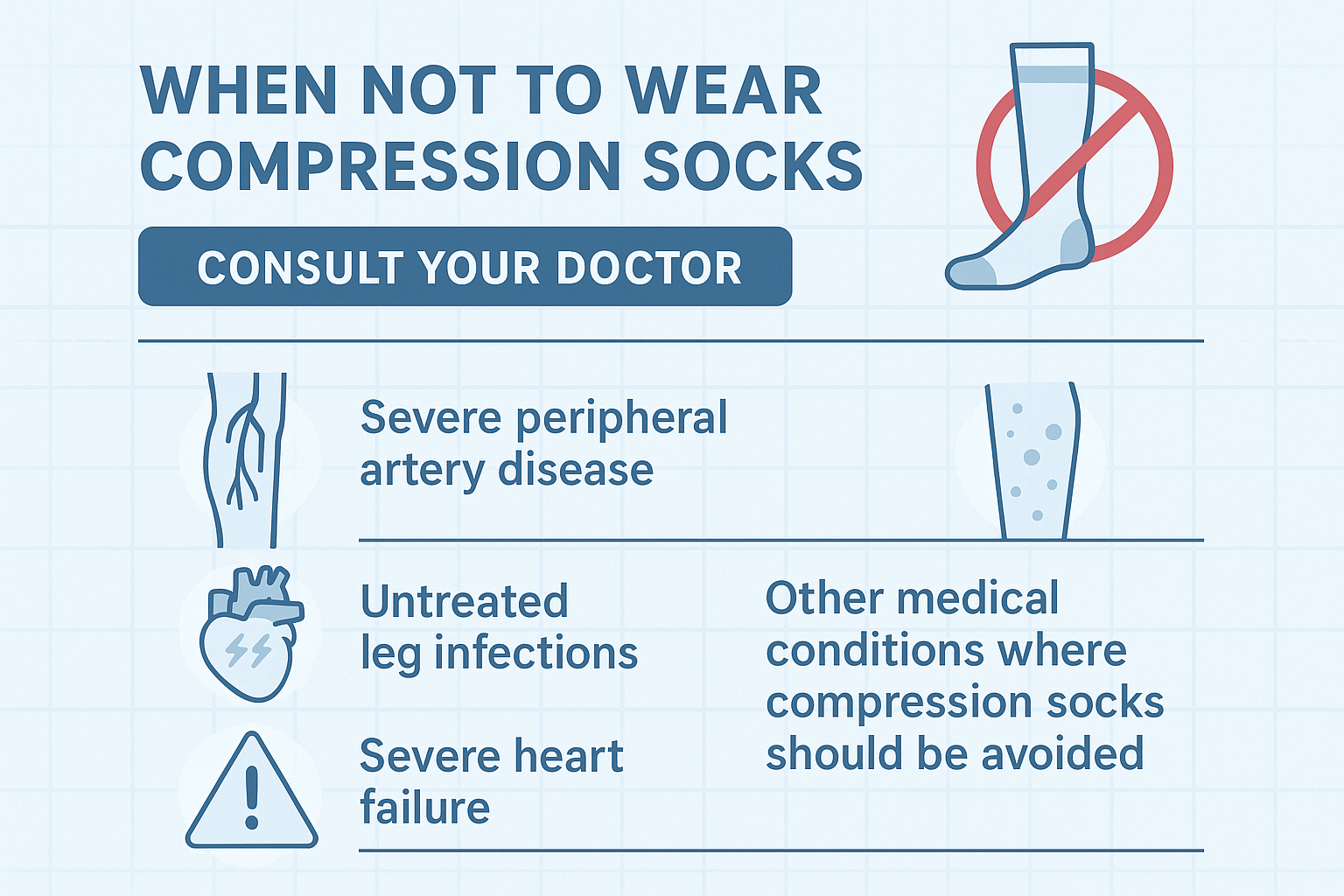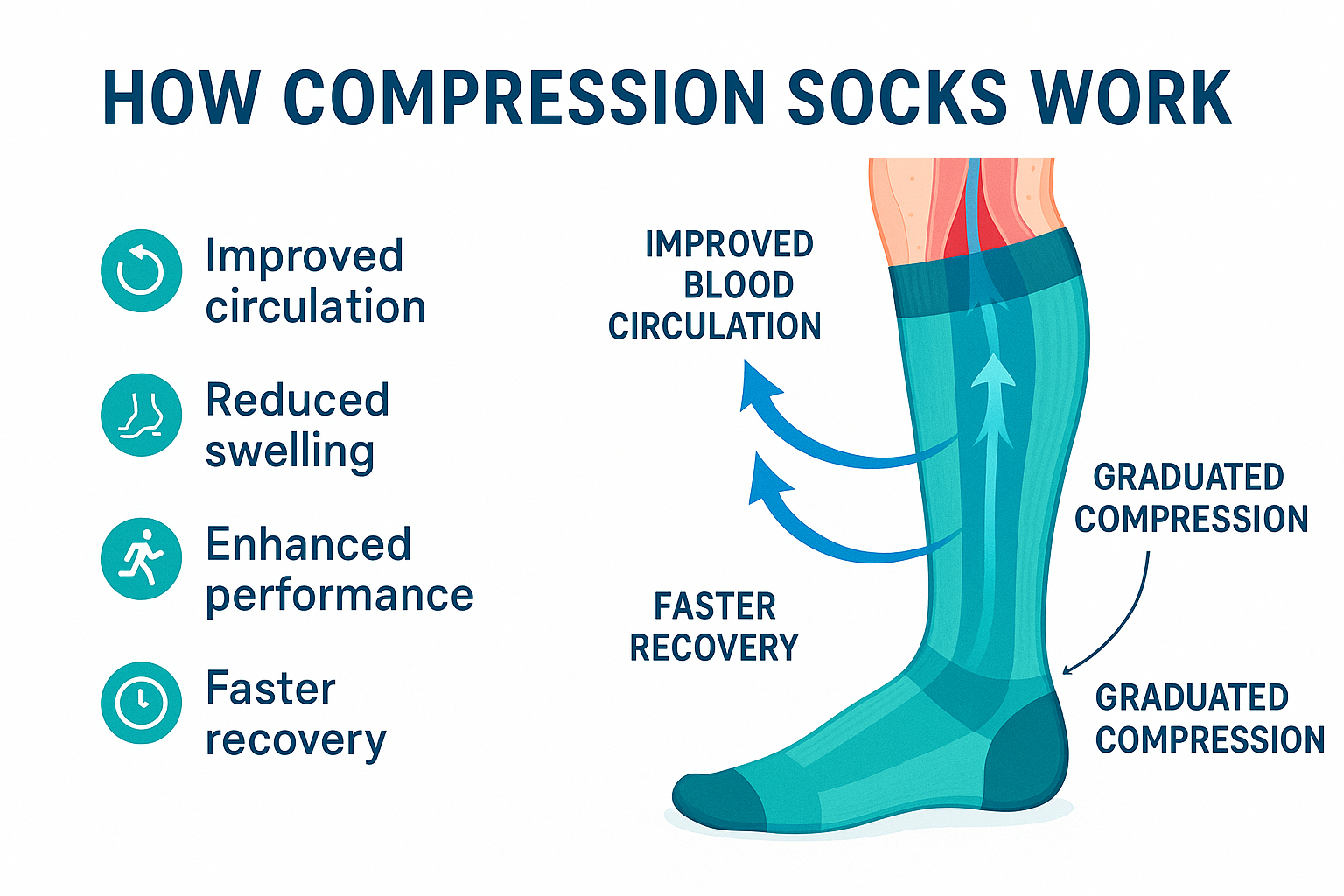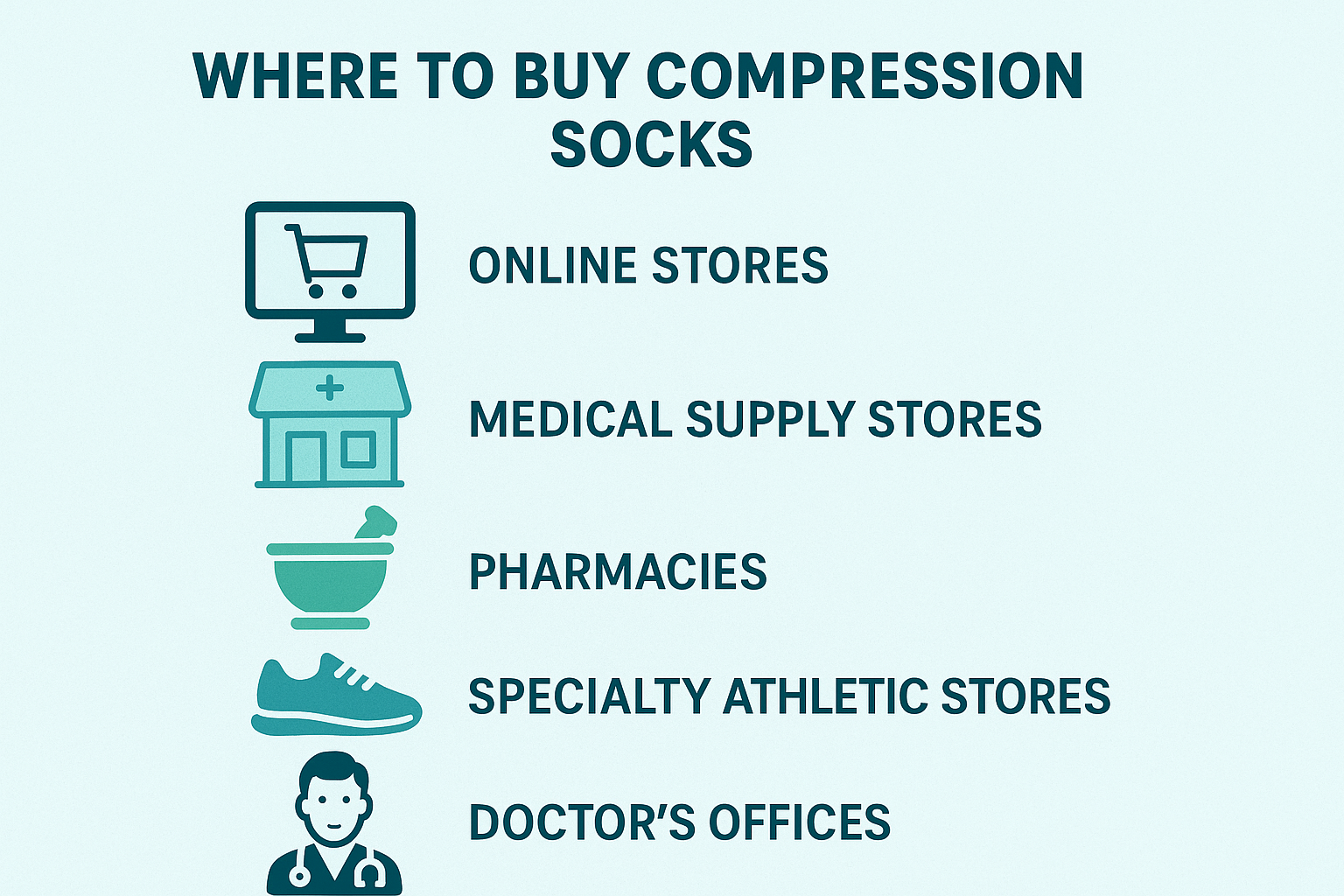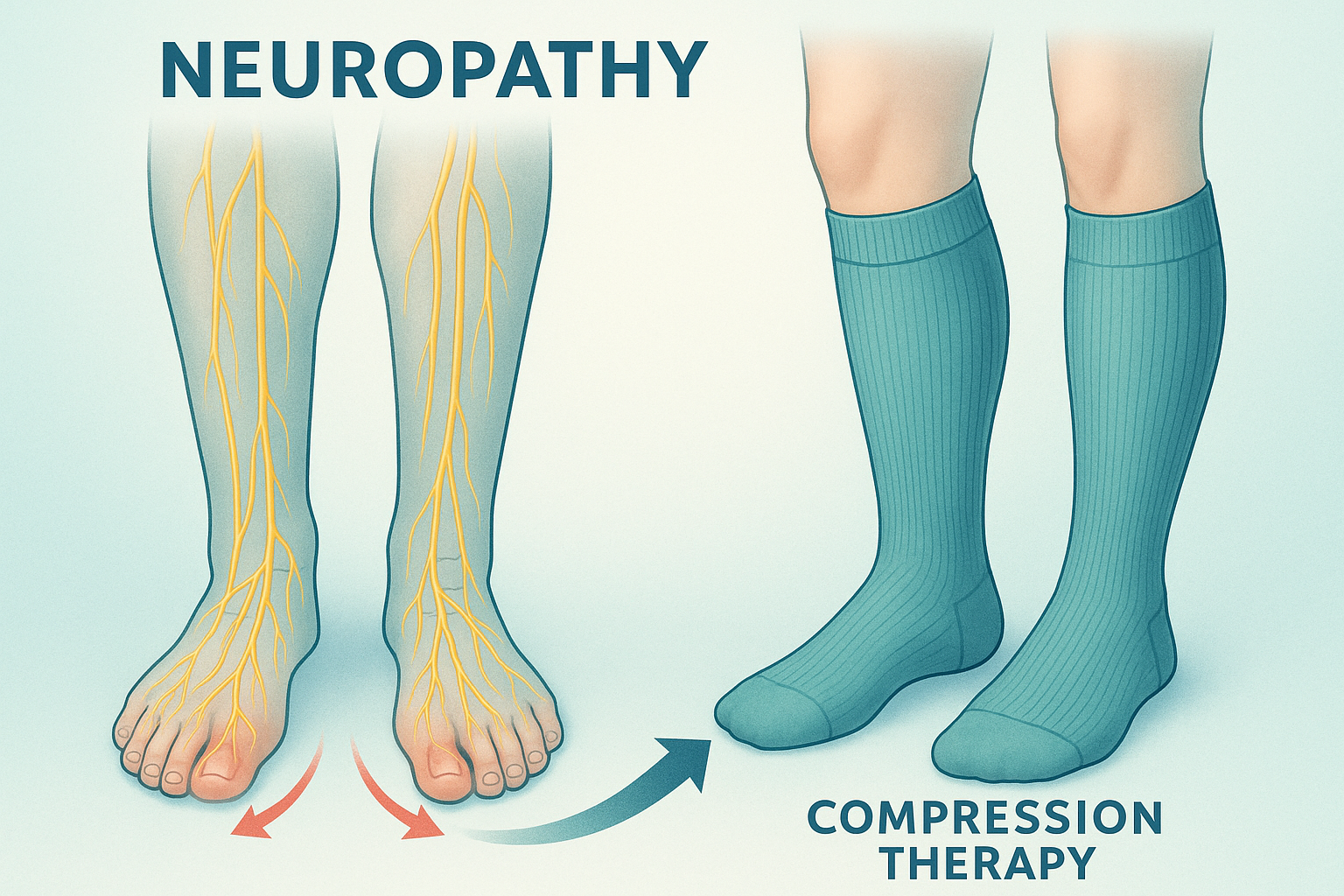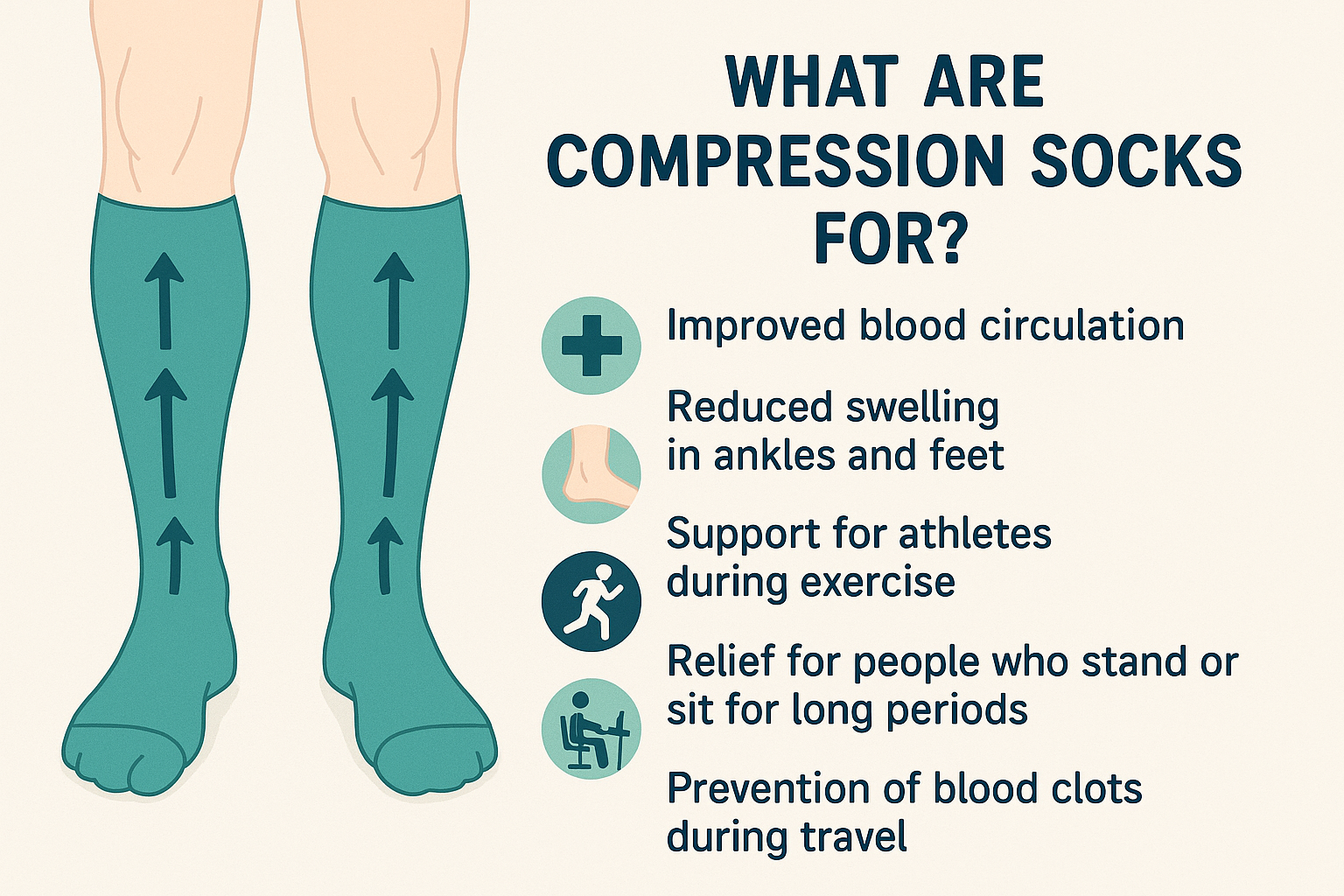
What Are Compression Socks For?
If you’ve heard about compression socks but aren’t sure why people wear them, you might be asking: what are compression socks for? These specialized socks aren’t just for athletes or medical patients—they’re designed to improve circulation, reduce swelling, prevent blood clots, and keep legs feeling energized throughout the day.
In this complete guide, we’ll break down the top benefits, medical uses, lifestyle applications, and frequently asked questions about compression socks so you can decide if they’re right for you.
Understanding Compression Socks
Compression socks are made with elastic fibers that apply gentle, graduated pressure to your legs. This means they’re tightest at the ankle and gradually less restrictive higher up. This design helps blood flow upward toward the heart instead of pooling in the feet and ankles.
This simple but effective mechanism is what makes compression socks useful for a wide range of people—from marathon runners to office workers.
Main Benefits: What Are Compression Socks For?
The primary uses for compression socks include:
1. Improving Circulation
Compression socks keep blood moving upward, reducing the risk of sluggish circulation and clot formation.
2. Reducing Swelling
They prevent fluid buildup (edema) in the ankles and feet, which is common in pregnancy, long flights, or extended standing.
3. Preventing Blood Clots
They reduce the risk of deep vein thrombosis (DVT), especially during long periods of inactivity like travel or hospital recovery.
4. Supporting Athletes
Athletes use them to reduce muscle fatigue, speed recovery, and improve oxygen delivery during and after training.
5. Everyday Comfort
Teachers, nurses, retail workers, and office staff wear compression socks daily to prevent tired, achy legs.
Medical Uses of Compression Socks
Doctors often recommend compression socks for medical conditions, including:
- Varicose veins – to reduce pain and slow progression.
- Lymphedema – to manage fluid retention.
- Chronic venous insufficiency – to improve venous return.
- DVT prevention – after surgery or during hospitalization.
- Pregnancy – to reduce swelling and discomfort in the legs.
Higher compression levels (20–30 mmHg or more) are often used in medical settings, while lighter levels (15–20 mmHg) are ideal for everyday wellness.
Lifestyle Uses of Compression Socks
Outside of medical settings, compression socks are widely used for lifestyle purposes. Common scenarios include:
- Travel: Prevent swelling and clotting on long flights or road trips.
- Work: Nurses, teachers, and office workers wear them to fight leg fatigue.
- Sports: Runners, cyclists, and gym-goers use them to aid performance and recovery.
- Everyday prevention: People use them to maintain healthy circulation and energy levels throughout the day.
This versatility is why compression socks are increasingly part of modern wellness routines.
People Also Ask (FAQs)
What is the main purpose of compression socks?
The main purpose is to improve circulation, reduce swelling, and prevent blood from pooling in the lower legs. This helps reduce fatigue and lowers the risk of clotting.
Who should wear compression socks?
Athletes, travelers, pregnant women, healthcare workers, office staff, and people with vein conditions all benefit from compression socks.
Can compression socks be worn every day?
Yes. Many people wear them daily for work, travel, or exercise. They’re safe for long-term use when properly fitted.
Do compression socks help with varicose veins?
Yes. They relieve pain, reduce swelling, and prevent varicose veins from worsening.
Do doctors recommend compression socks?
Absolutely. Doctors often prescribe them for circulation issues, DVT prevention, and post-surgery recovery.
What strength compression socks should I buy?
For daily wear, 15–20 mmHg is most common. For medical conditions, higher levels (20–30 mmHg or above) may be recommended by a doctor.
Different Types of Compression Socks
Compression socks come in different strengths and styles depending on their purpose:
By Compression Level
- 8–15 mmHg: Light compression for mild fatigue and travel.
- 15–20 mmHg: Moderate compression for everyday use and pregnancy.
- 20–30 mmHg: Firm compression for medical conditions and athletes.
- 30–40 mmHg: Extra-firm compression prescribed for severe vein issues.
By Style
- Knee-high: Most popular, covering ankles and calves.
- Thigh-high: Provides broader circulation support.
- Full-length stockings: Often used in medical situations.
- Athletic designs: Breathable and stylish, for workouts and sports.
When Not to Use Compression Socks
While safe for most, compression socks may not be suitable for everyone. Avoid wearing them without medical guidance if you have:
- Peripheral arterial disease (PAD)
- Severe neuropathy from diabetes
- Skin conditions aggravated by tight fabrics
In these cases, always consult your doctor before use.
Expert Tips for Getting the Most Out of Compression Socks
- Put them on in the morning: Legs are least swollen after waking up.
- Wear them during activity: Travel, work, and workouts benefit most.
- Remove before bed: Unless prescribed, they’re not usually needed at night.
- Wash regularly: Keeps them clean, elastic, and effective.
- Replace every 3–6 months: Compression weakens with wear over time.
Conclusion: What Are Compression Socks For?
So, what are compression socks for? They’re for improving circulation, reducing swelling, preventing clots, aiding athletic recovery, and keeping your legs comfortable and energized. From travelers to athletes to healthcare workers, nearly everyone can benefit from wearing them daily.
Ready to try them yourself? Explore our complete collection here: Shop Green Drop Compression Socks.



